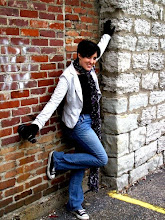All shoes should be chosen not by appearance but for comfort, support, performance, and protection. Some ballroom dance shoes are built poorly and can cause injury. Specifically look out for sharp edges near your ankle and for interior seams that will rub on your foot and cause blisters.
Some women prefer closed-toed dance shoes because they offer more protection than open-toed shoes do. The close-toed shoes protect the toenails from getting smashed or ripped off by a partner's shoes. A woman's Latin dance shoe tend to have a higher, slimmer heel and a softer, more flexible sole than do those sold for formal ballroom dancing.
As a side note: Ladies if high heels hurt, adding gel inserts or arch supports can help, or try wearing flats. Any orthopedist will tell you that high heels are not the best for your feet.
Depending on which dance you like, depends on which shoe you want to buy. Different dances require different type soles. The performance of a shoe depends primarily on its sole. New or well-brushed suede (chrome leather) soles are generally the best because they tend to offer just the right degree of traction on a polished wooden dance floor. Purchasing a cheaper dance shoe with a more-slippery smooth-leather sole can be dangerous as those type soles don't hold traction very well and can cause a dancer to fall or slide.
When purchasing a dance shoe, don't be shocked at the expense. The more expensive they are, they typically are better quality. While this is not always the case, most often expensive shoes are more durable and fit better.
At all costs, avoid any shoe with a rubber sole. These grip the floor and don't allow turns or movement very easily.
The types of shoes (heights and price ranges) are as follows: Flats for men and women have 1 or 1.5 inch heels and generally cost $40-120, although there are some cheaper domestic models. Ladies' high-heeled shoes typically have 2 to 3 inch heels and run about $40-150. There are also dance sneakers for men which I have been told are great for practice or non-competition dancing. These tend to run about $ 40 - 80 depending on brand.
Which to choose?
For the ladies heels are always ideal to use. They aid in weight shifts, turns and quick steps more than you realize. The 1 to 1.5 inch heel is good for ballroom dances such as Tango, Waltz and Rumba. With your weight placed more central and closer to the floor, it makes sudden moves, twists and foot action easier for those types of dances.
The high-heeled shoes with a typical 2 to 3 inch heel are great for swing and Latin type dances. These dances require that your weight be placed more on the balls of your feet rather than the whole foot. With the weight distributed such, you can make weight shifts faster, turn easier (on the balls of your feet) and as in swing be able to kick and jump around easier.
For men there are actually differences in shoes. There are different heel choices to pick from, Cuban heel or standard dance shoe. The Cuban heel sounds just like the dance you would use it for; Latin dances. It gives a slight weight push to the balls of the feet allowing for the faster weight changes. This isn't necessary unless you are aiming for performance or competition dances. A standard shoe will work just fine.
Sneakers are for both men and women. As I mentioned above, great for practicing or non-competition dances, such as clubs or parties.
Good luck finding that perfect fit for your foot and dance!

No comments:
Post a Comment
I'm interested in what you have to say! Please share